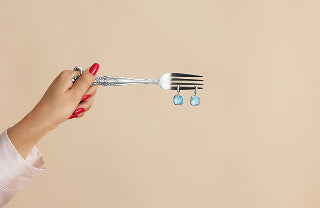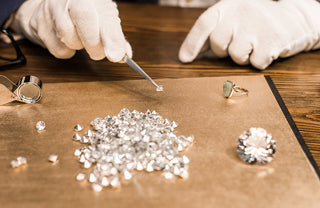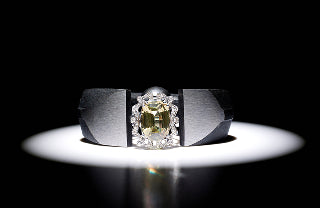Pearl Prices
Share
Chapter 1
1.1 Pearl - first among gems
1.1.1. Legendary Pearls
1.1.2. What is a pearl?
1.1.3. Debut of cultured pearls
Chapter 2
1.2 Types of pearls
1.2.1. Types of Saltwater and Freshwater Pearls
1.2.2. Pearls from the deep
Chapter 3
1.3 Quality - #1 Key to Lasting Beauty
1.3.1. Six factors that affect the quality and value
1.3.2. Used Artificial treatments
Chapter 4
1.4 Guideline to pearl prices
1.4.1 Magnificent Natural Pearls sold by Faimous Auction Houses
Glossary of terms
Bibliografie
"Again, the kingdom of heaven is like a merchant looking for fine pearls. When he found one of great value, he went away and sold everything he had and bought it." Matthew 13:45-46
This passage describes how valuable a single pearl can be and how the merchant was willing to sacrifice everything for it.
Chapter 1
1.1 Pearl - first among gems
The allure of the pearls is timeless and universal. Praised in every culture, from ancient China, Egypt, Persia, India, Rome, to the Aztec even the ancient cultures of the South Pacific and Australia, the pearl is regarded as one of the rarest, most valuable and symbolic of gems.
Today’s birthstone of June (along with another ravishing gemstone, the Alexandrite), the pearl has history more ancient, spiritual, fascinating and more regal than any other gem.
In today’s modern world when we wonder so often how we will survive the obstacles and stresses that come before us and usually overwhelm us, the pearl is a wonderful reminder how it’s own creation could not exist without adversity and struggle; how something which might at first appear as misfortune can come something of great beauty and value.
(Poza cu faimoasa pictura a lui Botticelli “The birth of Venus” si sub textul : One of most beautiful allusions to pearls and love, seen in the famous painting by Botticelli,
“The birth of Venus” where we see Venus, the goddess of love coming forth from the oyster, herself the pearl )
It is not known exactly when or where the pearl was discovered, likely it was long before recorded history.
Unlike most gems(colored) and even diamonds(adaugam link spre unul din art existente despre diamante), it’s beauty is there for all to behold from the very first moment.It needs no enhancement, no cutting or polishing. An exquisite pearl has a depth and lustrousness that seems to actually glow from within. Coming from a living creature its natural beauty radiates a lustrousness compared to a living spirit!
1.1.1. Legendary Pearls
The legendary pearls have long been a subject of fascination and myth throughout history. Legend has it that these pearls are extraordinarily rare and valuable, possessing magical properties and imbuing their owners with good fortune and prosperity. Some stories even suggest that they hold the power to grant wishes or provide protection against harm. Due to their mystical qualities, the legendary pearls have been sought after by rulers, traders, and adventurers for centuries.
La Peregrina (imagine specifica cu aceasta perla faimoasa)
Also known as “the unconquerable”, was first seen in paintings of Mary Tudor(1554), who received La Peregrina as a gift from her husband, Philip II, King of Spain who had also received it as gift “from America” and became part of the Spanish treasury from the mid-1500s, until 1813.
In 1969, after receiving a lot of publicity, La Peregrina was sold at auction by Sotheby’s to Elisabeth Taylor for 37.000 US dollars. By that time, the pearl weighted 10.19ct(aprox 203.84 grains, 4 grains = 1 ct).
The Hanoverian pearls
The Hanoverian pearls are a famous set of pearls that date back to the 19th century. The pearls were originally owned by the House of Hanover, a German royal family that held the British throne from 1714 to 1901. The pearls were said to have been a gift from Prince Ernst August of Hanover to his wife, Princess Frederica of Hanover.
The Hanoverian pearls consist of three strands of large, perfectly matched pearls, with a diamond clasp. The pearls are said to have been among the finest in Europe at the time they were acquired by the House of Hanover. They have been worn by several members of the British royal family, including Queen Victoria and Queen Elizabeth II.
Today, the Hanoverian pearls are considered a priceless historical treasure. They are owned by the Duke of Edinburgh, and are part of the Royal Collection, which is held in trust by Queen Elizabeth II for the nation. The pearls are occasionally exhibited at royal events.
Pearls of Indian - The Pearl Carpet of Baroda
The Pearl Carpet of Baroda is a stunning piece of art made using precious materials such as silk, silver, gold, diamonds, rubies, emeralds, and pearls. It was created in India during the 18th century and is said to have taken almost 30 years to complete.
What makes this carpet unique is its intricate design, which features an array of flowers, birds, and animals all woven together using the finest materials. The use of pearls on the carpet gives it an ethereal beauty, and it is said that almost 1.5 million pearls were used to create this work of art.
The Pearl Carpet of Baroda has been described as one of the finest pieces of Indian art and has been exhibited in various museums around the world. Today, it remains a symbol of India's rich cultural heritage and is considered a national treasure.
Adaugat imaginea covorului iar langa urmatorul text : The Pearl Carpet of Baroda , a carpet of natural pearls measuring 10 feet by 6 feet(aprox. ), housed in the Palace of Gaekwar, considered one of the most sumptuous, beautiful and valuable works of art on earth.
1.1.2. What is a Pearl
Pearl = organic gem, that is a gem that comes from a living thing; produced by several species of saltwater and freshwater mollusks(soft bodied animals protected by a hard exterior shell) and there are over 100,000 different types(but only a few produce exquisite pearls).
How is a pearl made…
In the case of natural pearls(not cultured pearls), a tiny intruder such as a sea parasite finds its way into the mollusk’s shell, and lodges itself inside. Because the mollusk can’t get rid of it, it begins to produce a secretion to soothe the irritation the intruder causes; this secretion is a brownish substance called conchiolin(a protein that gives the pearl its iridescent luster), over which another substance is secreted(usually a whitish substance, called nacre ). The conchiolin binds the nacre together to form the pearl.
Practically the buildup of layer after layer of nacre enveloping the intruder forms the pearl. Nacre is also the same substance found in the lining whithin the shell.
Composition and physical properties
-
2.5-3.5 hardness on Mohs scale;
-
primarily made of calcium carbonate (CaCO3) in the form of aragonite crystals;
-
minerals such as magnesium, strontium, and sodium can also be present in pearls, influencing their color and quality;
-
Compact nature which makes it durable(depending on its quality) and very resistant to knocks and blows.
1.1.3. Debut of cultured pearls
In the mid-sixteenth century, the most popular royal jewel was the pearl. We can find a lot of magnificent paintings with kings and queens of Europe dressed with garments bedazzled with pearls(ex. King Henry VIII and his daughter Queen Elisabeth I).
Because of the high demand for natural pearls and overfishing that resulted in depletion of the oyster population by the late 1916, the world supply of fine, natural pearlshad already begun to dwindle significantly.
Today fine natural pearls are as rare as at any other time in history which results in staggering prices.
The breakthrough in producing commercially viable cultured pearls is credited to Kokichi Mikimoto, a Japanese entrepreneur and pearl farmer. In 1893, Mikimoto successfully developed a method for culturing pearls, which led to the establishment of his pearl company.
Mikimoto's experiments with pearl culturing began in the late 1800s. He collaborated with a marine biologist named Tokichi Nishikawa, and together they conducted extensive research on the process of pearl formation in oysters. It’s important to note that Mikimoto was not the sole inventor of pearl culturing. Other individuals, such as William Saville-Kent in Australia along with Tatsuhei Mise ( Japan) helped discover the techniques for culturing pearls.
Mikimoto, the son of a noodle maker, patented and purchased the technique and by the 1920s was selling them around the world.
Over the years, culturing techniques have been improved and new techniques developed. Today’s pearl market is a cultured pearl market which are essentially the same as natural pearls in terms of their chemical composition and physical properties but the main difference lies in their origin: natural pearls form by chance without human intervention, while cultured pearls are intentionally cultivated through the pearl farming process.
Chapter 2
1.2. Types of pearls : a Pearl for every Mood
Today , we have a lot of variety available which results from the use of different types of oysters, physical environment in which they live, and different cultivation techniques used by the producers. The general classification is : saltwater cultured pearls or freshwater cultured pearls, divided into the white category, that includes shades of creamy-white, yellow-white, silver-white to pink-white and the fancy color category, the best known of which are the natural color black cultured pearls and the deep yellows and golden cultured pearls. Another classification is based on their shape : round or baroque(which is technically any pearl that is not round).
Saltwater Cultured Pearls…
They are grown today by pearl producing oysters in multiple parts of the world including : China, Australia, French Polynesia, Japan, Korea, Fiji, Mexico, Thailand, Indonesia, Vietnam, Cook Islands.









